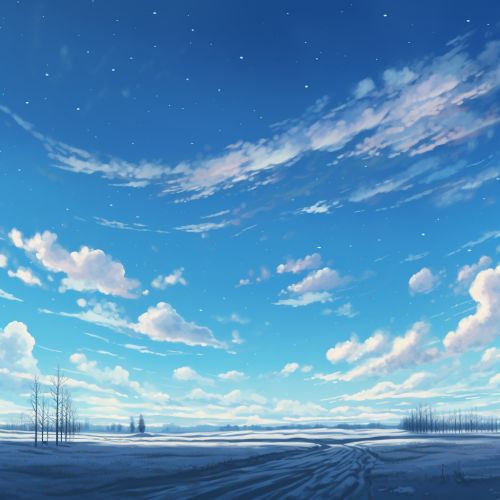Anticyclone
Introduction
An anticyclone is a large-scale circulation of winds around a central region of high atmospheric pressure, clockwise in the Northern Hemisphere, counterclockwise in the Southern Hemisphere. Anticyclones are associated with settled, fine weather. In contrast to cyclones, which are low pressure systems, anticyclones are high pressure systems.


Formation and Characteristics
Anticyclones form from air masses cooling off over land and ocean surfaces. This cooling results in the air becoming denser, hence creating atmospheric pressure. The rotation of the Earth causes the air to spiral out from the high pressure center, creating a clockwise rotation in the Northern Hemisphere and a counterclockwise rotation in the Southern Hemisphere. This is known as the Coriolis Effect.
The characteristics of an anticyclone include light winds, clear skies, and cool nights and warm days. In the absence of strong winds, vertical air motion is more likely, which can lead to the formation of fog and frost. Anticyclones can also bring heatwaves during summer and cold waves during winter.
Types of Anticyclones
There are several types of anticyclones, including surface anticyclones and upper-level anticyclones.
Surface Anticyclones
Surface anticyclones are high pressure systems that occur at the Earth's surface, where the atmospheric pressure is greater than the surrounding environment. They are typically associated with clear skies and calm weather.
Upper-Level Anticyclones
Upper-level anticyclones, also known as upper-level highs or ridges, occur in the upper troposphere and lower stratosphere. These anticyclones can influence the movement and development of surface weather systems.
Effects on Weather
Anticyclones play a significant role in determining the weather patterns of a region. They are associated with clear, calm weather. The absence of significant wind and cloud cover during an anticyclone often leads to overnight cooling and can cause frost in cooler climates.
During the summer, anticyclones can lead to heatwaves as they create a cap that can trap heat near the surface. Conversely, during the winter, they can cause cold waves and intense inversions.
Anticyclones and Climate Change
Research suggests that changes in the frequency and intensity of anticyclones may be linked to climate change. Some studies indicate that warming temperatures could lead to more frequent and intense heatwaves, potentially exacerbated by stronger and more persistent anticyclones.
